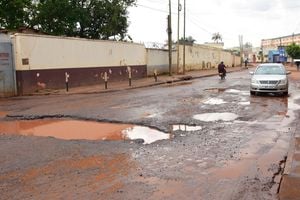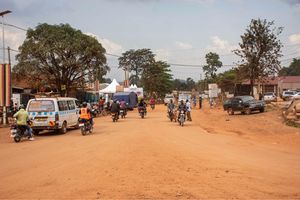
Mr Daniel K. Kalinaki
This week saw the launch of the Greater Kampala Metropolitan Area Urban Development programme, a Shs2.2 trillion plan to rebuild some roads around the capital. The $606 million plan is mostly a loan from the World Bank and AFD, a French lender.
Given the size of the population that lives in Greater Kampala and the area’s contribution to the national economy, it is shameful and self-defeating to have ignored the road network for so long. Nevertheless, we will have failed if, at the end of the project, all we have are a few kilometres of paved road and a lot of debt. If it isn’t too late, here are some thoughts on using this project to catalyse the Greater Kampala peri-urban economy.
First, we should insist that the (inevitably foreign) contractors awarded the tenders to build the roads include meaningful local content. At the top end, each should be paired with a locally owned construction company to learn from them, while also doing some of the easier civil works. It is criminal that after six decades of building roads, we still lack sufficient local capacity to build our own roads. At the lower end of the scale, the contractors should commit to sourcing some of the materials like murram and sand from local businesses in the respective areas.
If necessary, these can be encouraged to form consortiums to generate scale and build their capacity. This would create employment opportunities and ensure some of the money remains within these communities. The second idea is to future-proof the project. A 15-kilometre commute from, say Kira, to the city centre can, on a bad day, take close to two hours. Better roads, including traffic lights and overpasses, will make it more bearable and reduce the commute time, but evidence shows that better roads bring out more cars.
Car traffic invariably increases to match the expanded roads. A few tweaks can help. One is to build bus lanes into these roads to form a basis for mass transit of commuters. With safe, fast, and affordable buses, many people will not need to drive, helping to decongest the roads. Ditto cycling lanes. If we are feeling clever, we can even make provisions for tram lines to be built in the future, reducing the cost of land acquisition.
Even with the existing old railway line, building park-and-ride facilities at Banda, Kireka, Namboole, Mukono and other stops could significantly cut down on the number of cars that have to come into the capital – while also giving a financial boost to the railway corporation. The third idea is to rethink Greater Kampala itself, from a dormitory in which people return to sleep, to a self-contained dynamo of urban living and economic activity. This shift is already happening in small but important ways. For instance, while shops in Kampala close at dusk, those in the suburbs stay open longer, allowing a night economy to operate with commuters turned into customers.
Private money has already followed this shift, with mini commercial centres springing up across suburbia and eating the dinner that was previously served to the likes of Garden City and Oasis Mall. To support this shift, we can use some of this money to build a few more public schools and public hospitals in Greater Kampala to provide choice for those unable to afford the many private options that already exist or are springing up. To avoid mission creep and stay within the confines of the project, an easy entry point could be to acquire land, which can be eye-wateringly expensive, and then lease it back to private sector developers to do bankable social projects. Some of them are probably not bankable, but much needed.
Think, for instance, of public parks, public gyms, public stadia, or public theatres. No individual in their right mind would spend billions to buy land and turn it into a public park; even if they charged an entrance fee, the numbers would never work. But an urban redevelopment project such as this can find monetary space to acquire 20 or more acres in each of the municipalities to create public spaces. If the money from the project is not enough, it can provide seed funding and then have municipal revenues, such as property taxes, pay off the rest over time.
There is also a world in which this, or a separate project, acquires real estate and leases it to private sector players to develop low-cost housing and ensure that low earners are not crowded out of the expanding suburbs and into slums. Better roads around Kampala are great to have, but with a little imagination, we can also build a staircase to ‘heaven’.
Mr Daniel Kalinaki is a journalist and poor man’s freedom fighter.
[email protected]; @Kalinaki



